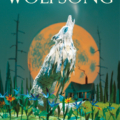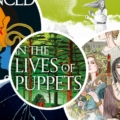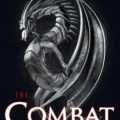Imagination is the soul of great worldbuilding, and its execution lies in the details. The best examples will immerse you in a rich, deep setting, creating the backdrop that allows the characters and story to shine. Here are five of my favourite examples of great worldbuilding.
1. Lord of the Rings

All right, let’s get it out of the way. You can’t discuss worldbuilding without mentioning Tolkien. Dude wrote a generational history, created multiple races that became the default standard for swathes of writers who followed him and even invented an entire language. By the time he got to writing the actual story, it was just about an afterthought! But all that work means that when you visit somewhere in his work, it feels like a real place that existed before you and will carry on long after you’re gone. Peter Jackson does a wonderful job of translating that richness into film in all the movies. I particularly enjoy the underground scenes in Moria and the Goblin Hoard.
2. Alien

Back in the Seventies and Eighties, movies could take their time getting started, establishing the world and ‘normal’ before the plot kicked in. I’m a big fan of this approach. Ridley Scott’s masterpiece opens with a long, slow pan through space, giving us a real feel of its vast emptiness, and then we get a shot running beneath the Nostromo, which also feels huge. When we go inside the Nostromo it is dirty. We’re told it’s a commercial mining ship and that’s exactly what we see: industrial, greasy and dark. The bridge feels claustrophobic, more like a flying oil rig than the futuristic starships of other films. One really nice touch is the helmet with a big red button reading ‘Emergency Helmet’. Right away we know this is dangerous, manual work. These aren’t explorers, they’re regular shmucks working for a paycheck. It’s a beautiful, slow burn opening that sets a gothic tone for a small band of average humans adrift in the dead of space, about to encounter something alien.
3. The Eyre Affair

Jasper Fforde’s Thursday Next books are based on the premise that there is a ‘bookworld’ where the characters from every book ever written are real, and act out a performance of their stories each time they’re read. Our hero, Thursday, is a member of Jurisfiction (see what he did there?) in the real world, but has the unusual power to be able to read herself into the bookworld to investigate crimes. Characters sometimes communicate via the actual books’ footnotes on the ‘footnoterphone’. In the ‘real’ world, Wales has separated from the UK, there is a substantial cross-border cheese smuggling problem, England works itself into a frenzy for the national sport of croquet, the Toast Marketing Board supports a major industry and Thursday has a pet dodo. Brilliantly bonkers.
4. Blackwing

In Ed McDonald’s Raven’s Mark trilogy, Ryhalt Galharrow is sworn to a sort of demigod wizard called Crowfoot, one of the Nameless – who actually have brilliantly evocative names like Shallowgrave and Lady of the Waves. When Crowfoot wants to contact Ryhalt, his raven tattoo rips itself free of his arm to provide instructions. But Ed’s greatest creation is the Misery. Imagine a magical nuclear wasteland where the land itself is trying to kill you. Geography constantly shifts, you’re infested with magical poison and hunted by hideous nightmares like Darlings – childlike magical psychopaths – and Gillings – insectoid things with an anaesthetic bite, that will eat you in your sleep, and repeat one of only six oddly mundane phrases, like “Evening master, care for a good time?”. These things gave my nightmares nightmares.
5. The Gutter Prayer

Gareth Hanrahan’s Black Iron Legacy trilogy showcases his incredible imagination, honed in years of writing for games. The eternal city of Guerdon has been built and rebuilt countless times, atop an underground warren of tunnels. The city is patrolled by the hideous Tallowmen, criminals whose bodies have been transmuted to wax (with a flame in their heads) by the alchemist’s guild, for whom they act as enforcers. The ‘stone plague’ slowly turns those it touches to stone (funnily enough) but basically makes them superhuman in the meantime. Corpse-eating ghouls live underground, kept at bay thanks to corpse tunnels that feed them the city’s dead. And the Black Iron Gods, who took physical form to better feed on their worshippers, have been smelted into great bells across the city. Guerdon is a dark, vivid setting for a unique story.
Justin Lee Anderson is the author of fantasy series The Eidyn Saga. The Lost War and Bitter Crown are out now. Find out more here.




